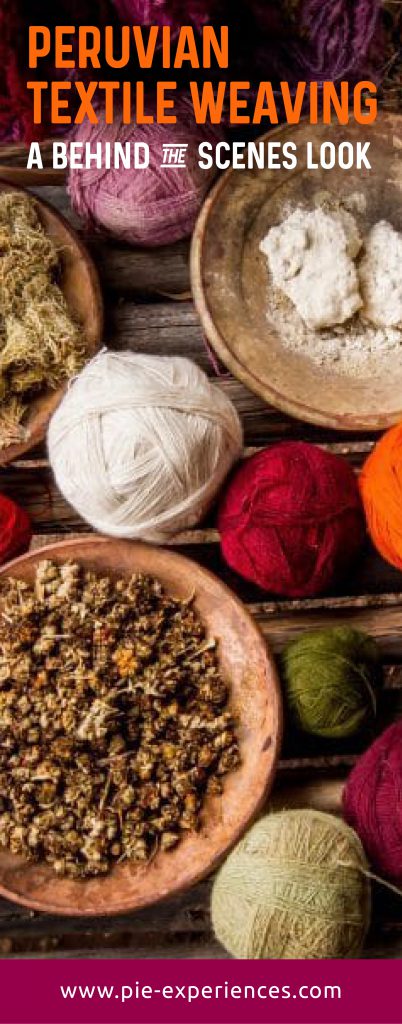The people of the Peruvian Andes maintain their traditions in a way that much of the world has failed to.
Tremendous changes have come to Peru since Spanish conquest and the ever-present globalization, but you will find some parts of Andean life unchanged.
For nearly 10,000 years, communities have been producing Peruvian textiles, and the skill runs deep to the modern day.
Just outside of Pisaq in the Amaru village, the carefully woven hats and ornate garments are the daily ware.
 On our recent community-based tourism excursion to the Sacred Valley to learn about Peruvian textile weaving, first thing was first.
On our recent community-based tourism excursion to the Sacred Valley to learn about Peruvian textile weaving, first thing was first.
They dressed us head-to-toe in our own local costume so we didn’t feel so underdressed as they guided us through the centuries-old weaving tradition.

Our hosts first led us to the garden where they asked the surrounding mountains (apus) for permission with a coca leaf ceremony.
Unfamiliar plants, flowering quinoa, and deeply colored roots grew wildly in the lush fields.
They showed us each of the plants and explained their purpose, instructing us to pluck handfuls as we passed.
Whether for dyeing, consumption, or medicine, it seemed each plant in the garden played a significant role.
And, while most appeared to be a simple green straight out of the ground, they assured us that time-tested Andean chemistry can activate a whole rainbow of colors.
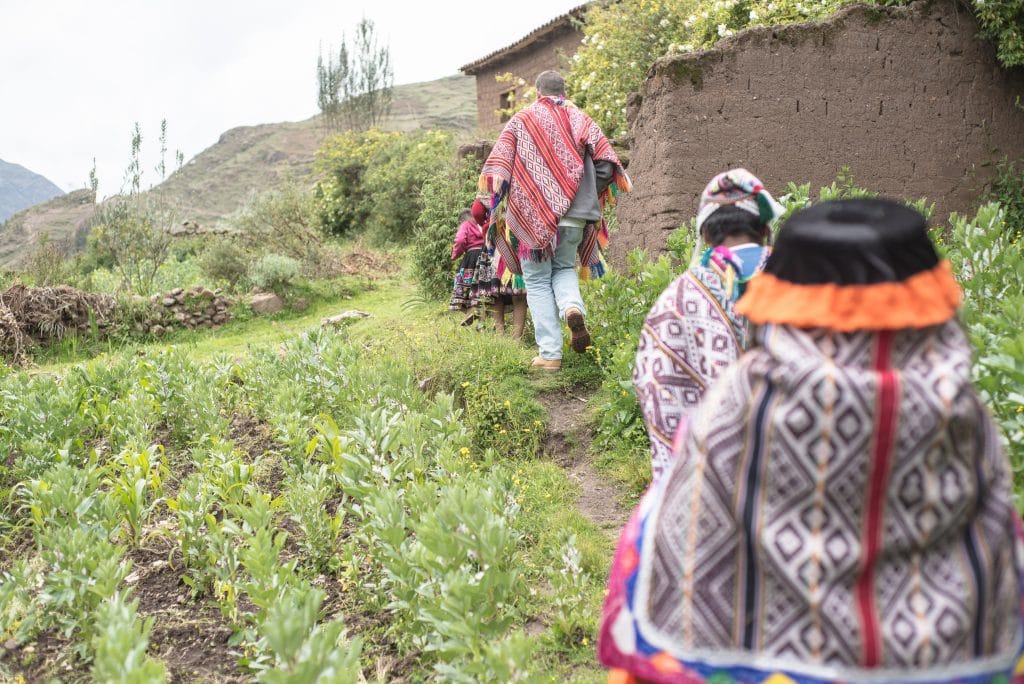
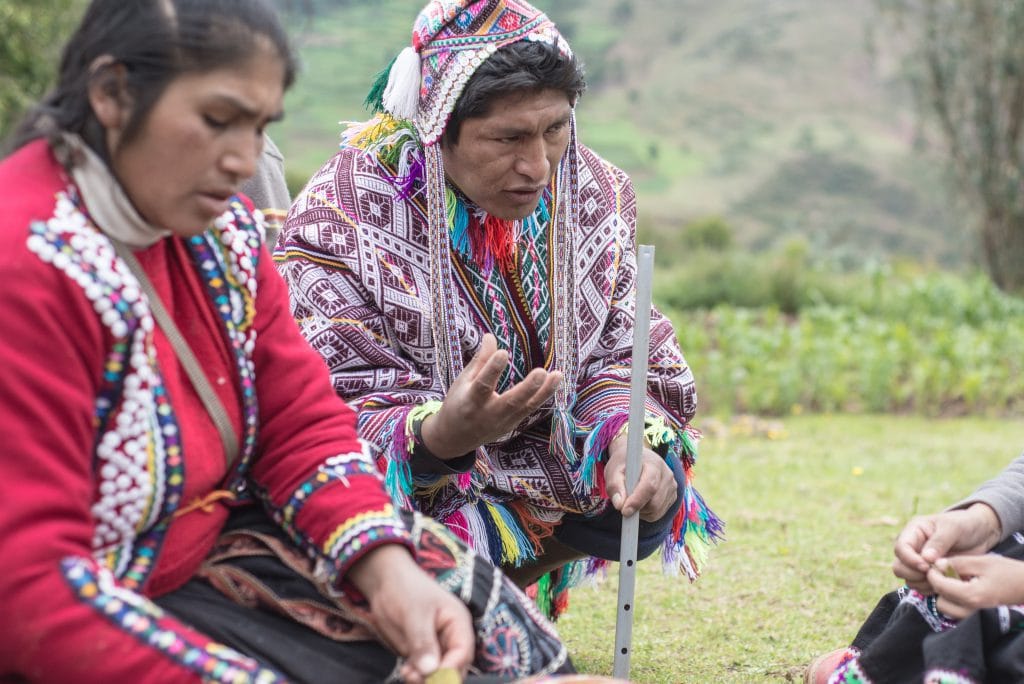
The family led us back to the house and untied the family sheep.
Our pachamanca was pre-heating at the time, and we shared silent apprehension that the sheep was part of our lunch.
Instead, the woman brought it to the ground and demonstrated the sheering process.
The sheep was acting quite complacent, and seemed almost as relieved as we were.
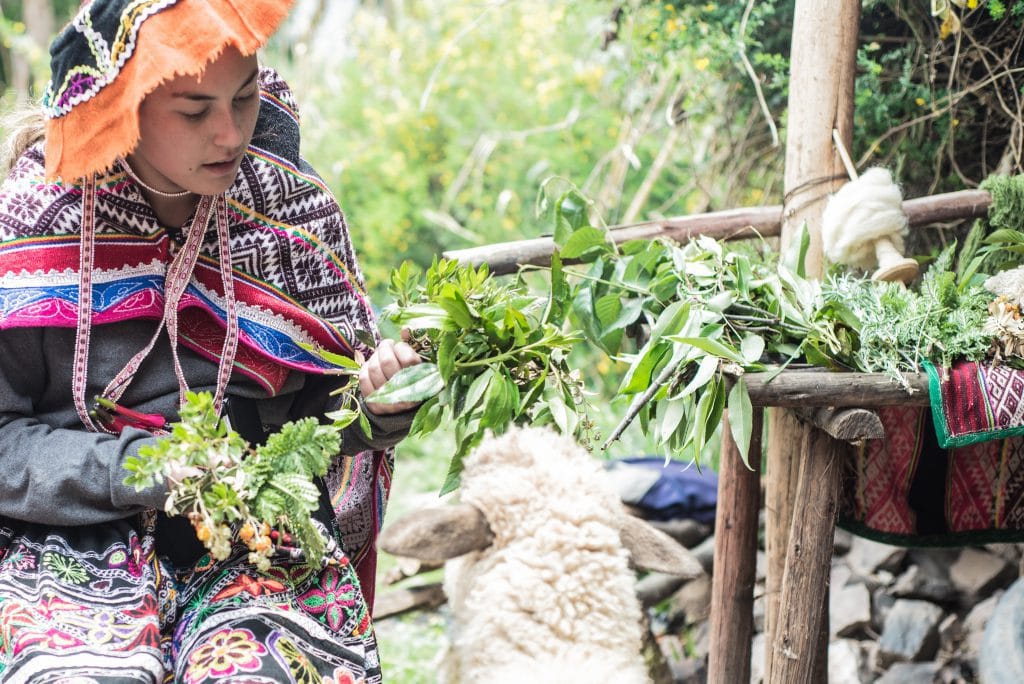
The small handful of freshly-sheered wool was rinsed with water and Andean shampoo, more commonly known as quinoa.
While the wool dried, she added the plants to heavy pots to steep for 40-60 minutes.
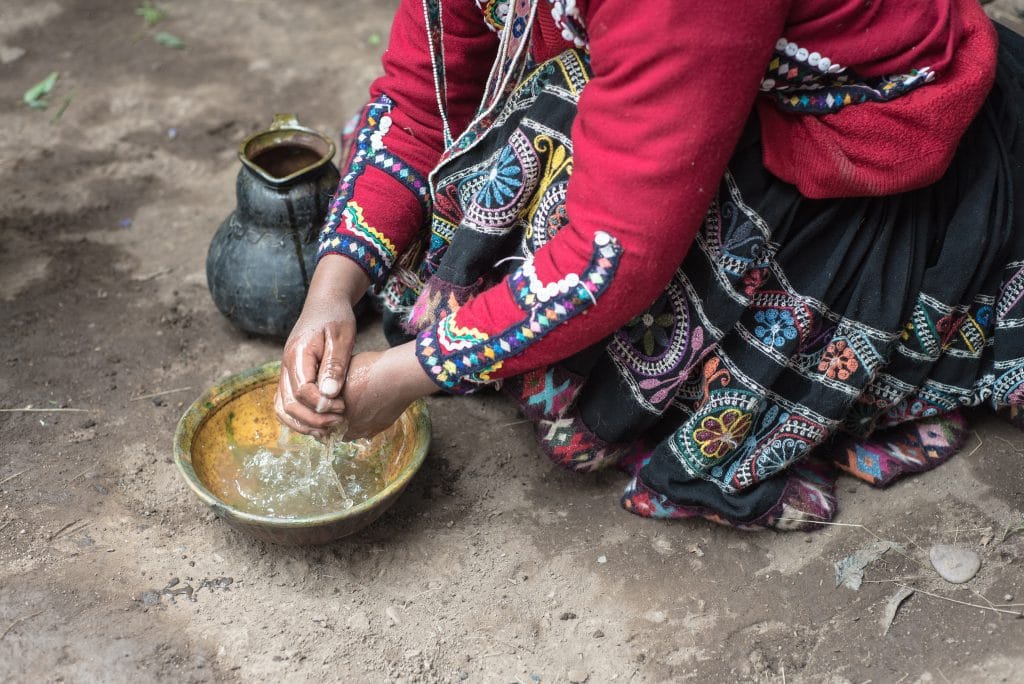
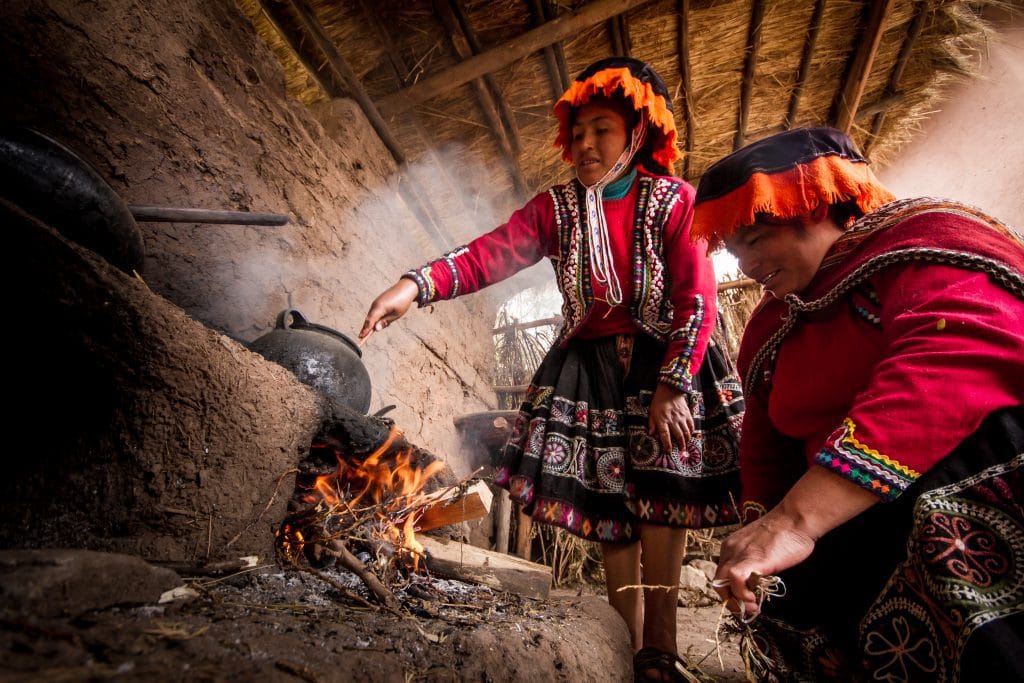
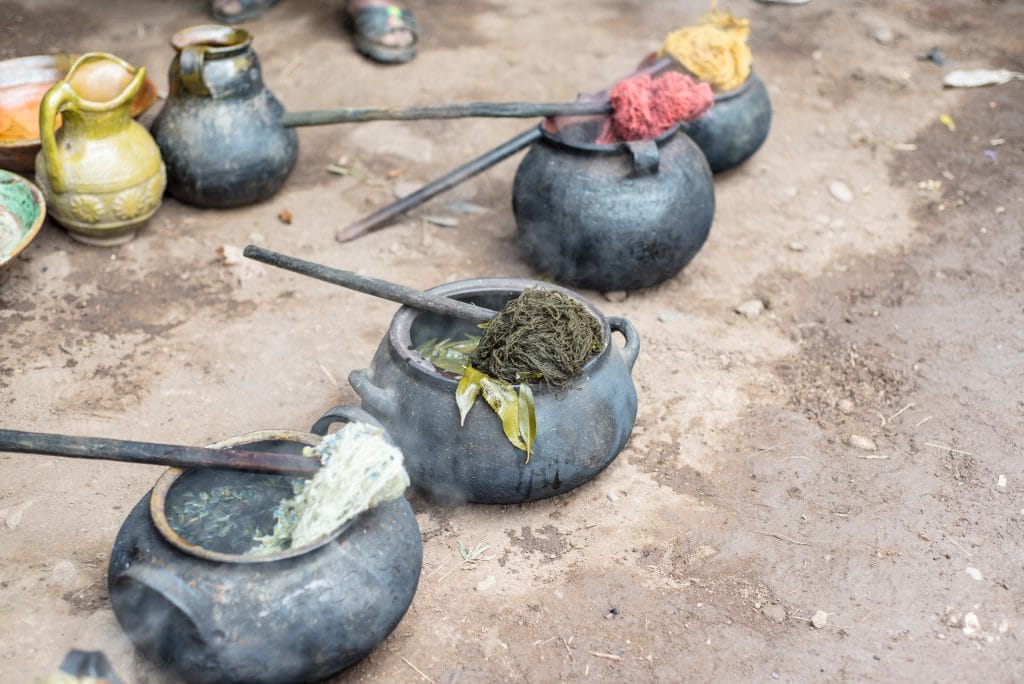
In the meantime, we tried our hands at spinning yarn.
It appeared deceptively simple, but as we spun, we kept breaking the yarn.
Our host explained to us that a single poncho can take the wool of two sheep and three months’ time.
At the rate we were going, a poncho might have taken years and several more sheep to complete.
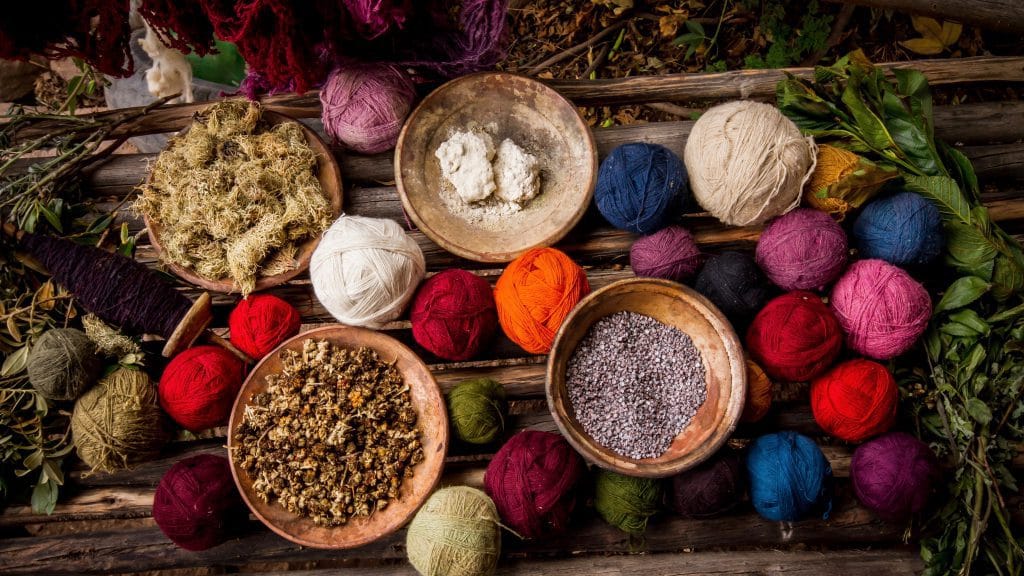
With the completed yarn, two women created a framework for the piece, tossing yarn back and forth between wooden frames.
As with many things in the Amaru village, the weaving process was also a community effort.
Once completed, they staked one side into the ground, and belted themselves to the other end to keep the yarn taut.
Feet outstretched, the women sat at their looms and created woven products ranging in thickness and intricacy.
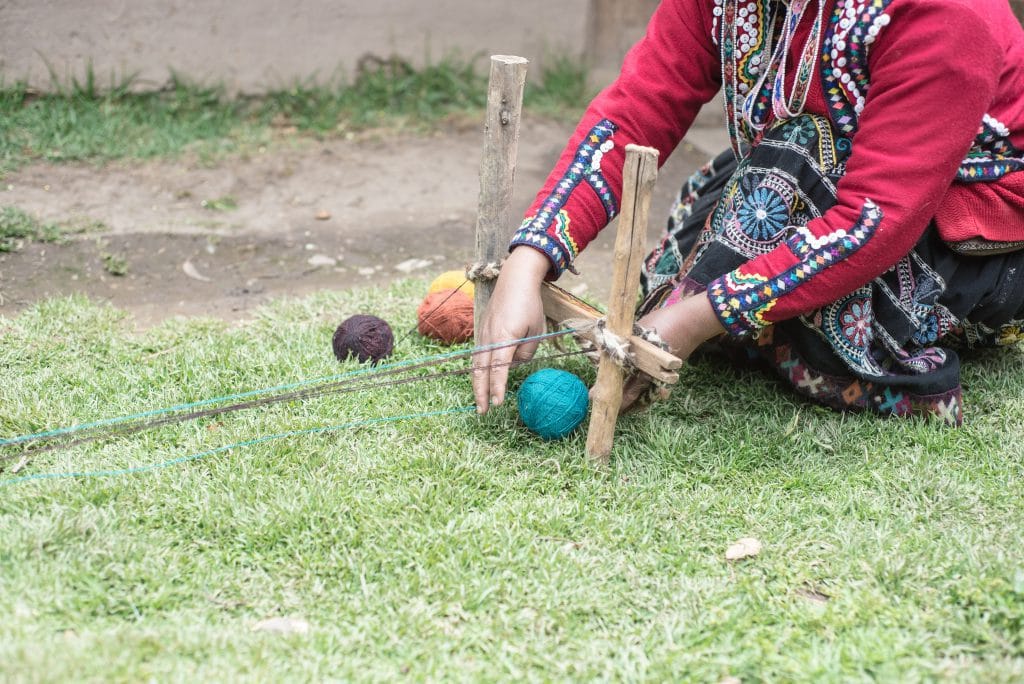
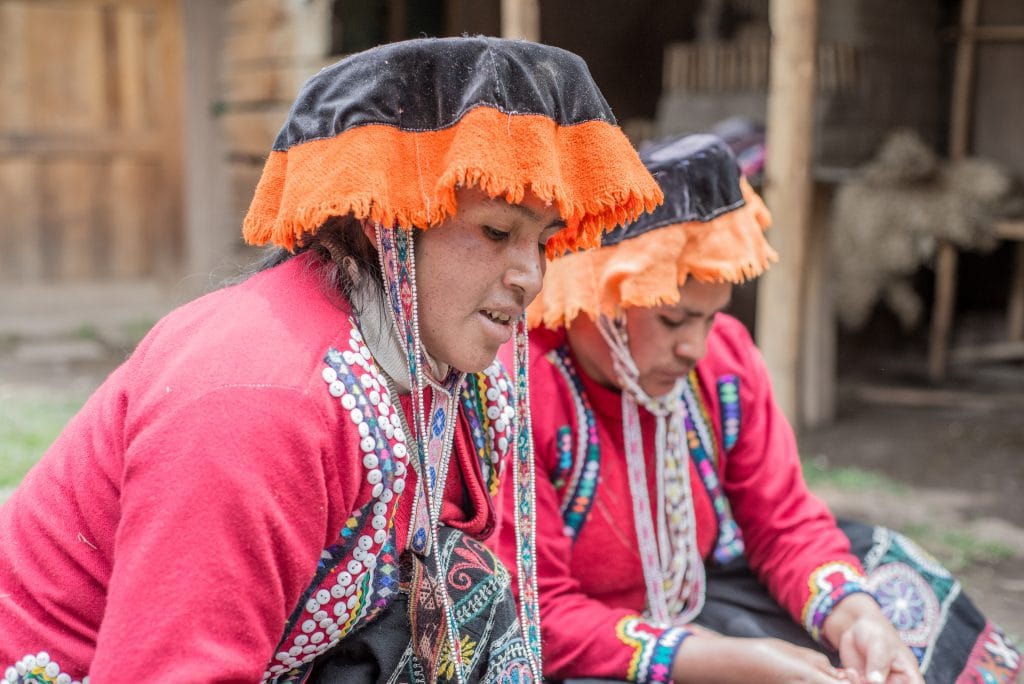
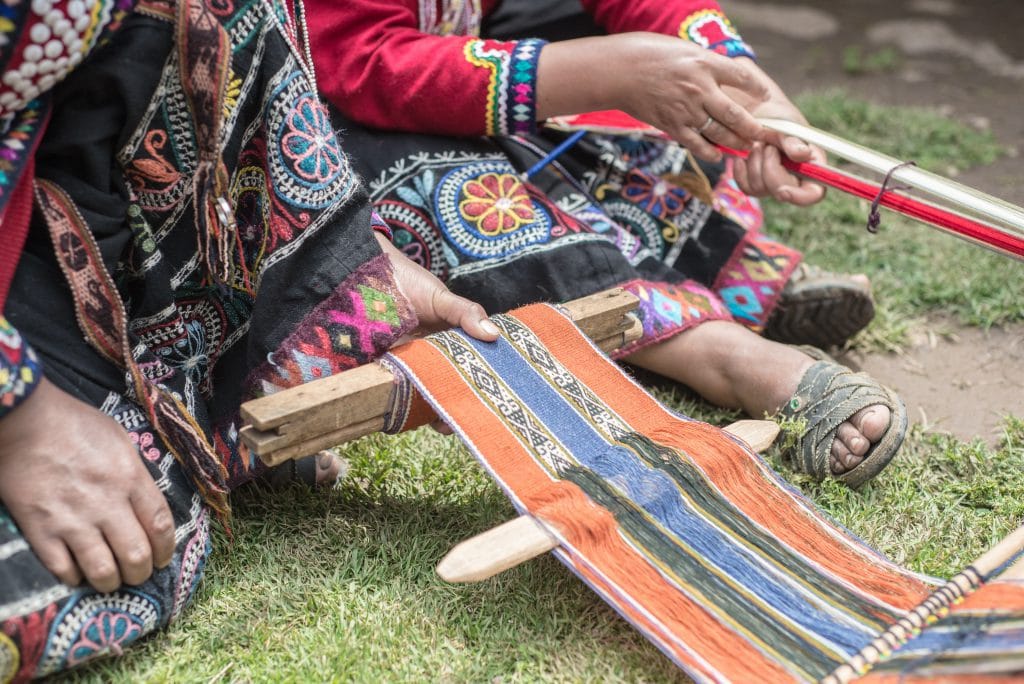
The girls are taught to complete basic designs from the age of nine.
By the time they reach maturity, they can create more than twenty patterns from memory.
The designs may become increasingly complex as they grow in years, but carefully trained fingers make few mistakes.
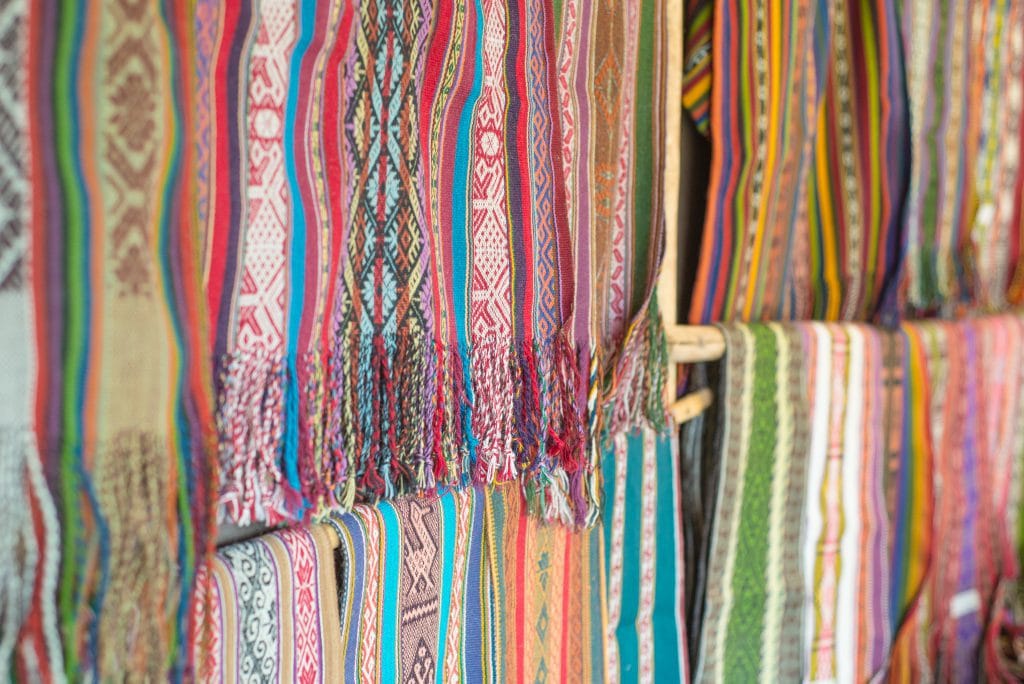 The textiles in Amaru village prove that not all Peruvian textile weaving is of the same quality.
The textiles in Amaru village prove that not all Peruvian textile weaving is of the same quality.
From the carefully tended plants to the hand woven tapestries, production starts and ends within the community.
When you buy a Peruvian textile from Amaru, it is more like preserving a part of history and capturing a memory than souvenir shopping.
And that is something beautiful.
Would you like to have the experience of watching Peruvian textile weaving for yourself?
Pin it!
